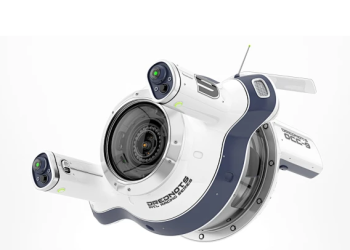In today’s fast-paced digital era, technology has become an integral part of nearly every aspect of our lives, including creative expression. The digital art revolution represents a paradigm shift in how artists conceptualize, create, and disseminate their work. This article explores the profound impact of technology on shaping creative expression and the evolving landscape of the art world.
The Evolution of Digital Art
Historical Background
The roots of digital art can be traced back to the 1950s when artists began experimenting with computers as a medium for artistic expression. However, it wasn’t until the advent of personal computers in the 1980s that digital art gained mainstream recognition.
Emergence of Digital Tools
The proliferation of graphic design software such as Adobe Photoshop and Illustrator revolutionized the way artists approached their craft. These tools provided unprecedented flexibility and precision, allowing artists to manipulate images with ease.
Impact on Traditional Art Forms
Digital art not only complemented traditional mediums but also challenged conventional notions of artistry. Artists embraced digital techniques to create innovative works that blurred the boundaries between digital and traditional art forms.
Key Technologies Driving the Digital Art Revolution
Graphic Design Software
Graphic design software like Adobe Creative Suite has become indispensable for artists, offering a plethora of tools for image editing, illustration, and typography.
Digital Painting Tools
Digital painting software such as Corel Painter and Procreate simulate traditional painting techniques while offering the advantages of digital manipulation and unlimited undo options.
3D Modeling and Animation Software
Software like Blender and Autodesk Maya enables artists to create intricate 3D models and animations, opening up new avenues for creativity in fields like film, gaming, and virtual reality.
Virtual Reality (VR) and Augmented Reality (AR)
VR and AR technologies are transforming how we experience art by immersing viewers in interactive and immersive environments. Artists are harnessing these technologies to create immersive installations and virtual galleries.
Changing Landscape of Creative Industries
Influence on Advertising and Marketing
Digital art has revolutionized advertising and marketing, enabling brands to convey their messages creatively through visual storytelling and immersive experiences.
Transformation of Entertainment Industry
The entertainment industry has undergone a seismic shift with the rise of digital art, from the production of blockbuster films to the creation of visually stunning video games and immersive VR experiences.
Opportunities in Gaming and Interactive Media
The gaming industry has emerged as a hotbed of creativity, with digital artists playing a crucial role in shaping the visual aesthetics and narrative experiences of games.
Democratization of Artistic Expression
Accessibility to Tools and Platforms
The democratization of digital tools and online platforms has empowered aspiring artists to create and share their work with global audiences, regardless of their geographical location or socioeconomic background.
Empowerment of Diverse Voices
Digital art has facilitated the emergence of diverse voices and perspectives, challenging traditional notions of artistry and representation and fostering inclusivity and cultural diversity.
Community-Driven Art Movements
Online communities and social media platforms have become hubs for artistic collaboration and exchange, enabling artists to connect, collaborate, and showcase their work to a global audience.
Challenges and Criticisms
Copyright and Ownership Issues
The digital landscape presents unique challenges in terms of copyright infringement and intellectual property rights, raising questions about ownership and attribution in the digital age.
Authenticity and Reproducibility Concerns
The ease of digital reproduction and manipulation has led to concerns about the authenticity and value of digital artworks, prompting debates about the significance of physical versus digital art.
Impact on Traditional Art Markets
The rise of digital art has disrupted traditional art markets, challenging established hierarchies and distribution channels and prompting a reevaluation of the value and significance of digital art.
Future Trends and Innovations
Advancements in AI-Generated Art
Advancements in artificial intelligence and machine learning are revolutionizing the way we create and interact with art, from generative algorithms to AI-powered tools for image analysis and synthesis.
Integration of Blockchain Technology
Blockchain technology holds the potential to revolutionize the art world by providing secure and transparent platforms for buying, selling, and authenticating digital artworks, mitigating issues of fraud and forgery.
Fusion of Digital and Physical Mediums
The convergence of digital and physical mediums is blurring the boundaries between virtual and real-world experiences, giving rise to new forms of interactive and multisensory art.
Educational Initiatives and Skill Development
Importance of Digital Literacy
In an increasingly digital world, digital literacy has become essential for artists to thrive and innovate in their respective fields, emphasizing the importance of incorporating digital tools and techniques into art education.
Training Programs and Workshops
Educational institutions and organizations are offering specialized training programs and workshops to equip artists with the skills and knowledge needed to excel in the digital art landscape.
Collaborative Learning Platforms
Online learning platforms and communities provide opportunities for artists to learn, collaborate, and share knowledge with peers from around the world, fostering a culture of lifelong learning and professional development.
Impact on Cultural and Social Dynamics
Influence on Cultural Representation
Digital art has the power to challenge and reshape cultural narratives and representations, offering a platform for marginalized voices and underrepresented communities to share their stories and perspectives.
Role in Social Activism and Awareness
Art has long been a powerful tool for social activism and awareness, and digital art is no exception, serving as a catalyst for social change and raising awareness about pressing issues such as social justice, environmentalism, and human rights.
Digital Art as a Form of Cultural Exchange
The global reach of digital art enables artists to transcend geographical and cultural boundaries, fostering cross-cultural dialogue, exchange, and collaboration on a scale never before possible.
Conclusion
The digital art revolution represents a seismic shift in how we create, consume, and engage with art, driven by technological advancements and changing cultural dynamics. As technology continues to evolve, digital art will undoubtedly play an increasingly prominent role in shaping the future of creative expression and cultural production.

FAQs After The Conclusion
1. What is digital art?
Digital art refers to artwork created using digital technology, encompassing a wide range of mediums and techniques, from digital painting and 3D modeling to interactive installations and virtual reality experiences.
2. How has technology impacted traditional art forms?
Technology has revolutionized traditional art forms by providing artists with new tools and mediums for creative expression, blurring the boundaries between digital and traditional art and opening up new avenues for experimentation and innovation.
3. What are some challenges facing the digital art industry?
Some challenges facing the digital art industry include issues of copyright infringement, authenticity, and the impact of digitalization on traditional art markets, prompting ongoing debates and discussions about the value and significance of digital art.
4. How can aspiring artists get started with digital art?
Aspiring artists can get started with digital art by familiarizing themselves with digital tools and software, experimenting with different techniques and mediums, and seeking out educational resources and communities for support and guidance.
5. What role does digital art play in cultural representation?
Digital art plays a crucial role in challenging and reshaping cultural narratives and representations by providing a platform for diverse voices and perspectives to be heard and celebrated, fostering inclusivity and cultural diversity.
6. How is digital art shaping the future of creative industries?
Digital art is shaping the future of creative industries by driving innovation and experimentation across various fields, from advertising and marketing to entertainment, gaming, and beyond, opening up new opportunities for artists and creators to showcase their work and connect with audiences on a global scale.
7. What are some emerging trends in the digital art landscape?
Some emerging trends in the digital art landscape include advancements in AI-generated art, the integration of blockchain technology for art authentication and ownership, and the fusion of digital and physical mediums to create immersive and interactive experiences.
8. How can digital art contribute to social activism and awareness?
Digital art can contribute to social activism and awareness by serving as a powerful tool for raising awareness about pressing social issues, sparking dialogue and conversation, and inspiring action and change, highlighting the transformative potential of art as a catalyst for social justice and advocacy.
















